Contents
How to Remove Spray Paint from Skin Easy Tips and Tricks

Getting spray paint off your skin can be a tricky task, but with the right techniques, it can be done. Whether you accidentally got paint on your hands while working on a DIY project or you’re dealing with a stubborn stain that just won’t come off, knowing how to effectively remove spray paint from your skin is essential.
One of the easiest ways to get spray paint off your skin is to use a common household item – oil. By applying a generous amount of oil, such as olive oil or coconut oil, to the affected area and gently rubbing it in, the paint will start to loosen and eventually come off. You can then wash your hands with soap and water to remove any residue.
If you don’t have any oil on hand, another effective method involves using rubbing alcohol. Simply soak a cotton ball or pad with rubbing alcohol and gently rub it on the painted area. The alcohol will break down the paint and make it easier to remove. Remember to wash your hands thoroughly after using rubbing alcohol.
If the spray paint stain is particularly stubborn, you can try using a mixture of baking soda and water. Create a paste by mixing the two ingredients together and apply it to the affected area. Let it sit for a few minutes before gently scrubbing it off with a soft cloth or sponge. Rinse your hands with water to remove any residue.
Remember, when dealing with spray paint on your skin, it’s important to act quickly. The longer the paint sits on your skin, the harder it will be to remove. By following these easy tips and tricks, you’ll be able to get rid of spray paint stains and have clean, paint-free skin in no time.
Why Remove Spray Paint from Skin?

Spray paint is a popular and convenient way to add color and design to various surfaces. However, it can be quite messy and difficult to remove from skin. Whether you accidentally got spray paint on your hands or arms while working on a project, or you were involved in a playful paint fight, it’s important to know how to safely and effectively remove spray paint from your skin.
There are several reasons why you might want to remove spray paint from your skin:
- Health concerns: Spray paint contains chemicals that can be harmful if they come into contact with your skin for an extended period of time. It’s important to remove the paint as soon as possible to avoid any potential health risks.
- Appearance: Spray paint on your skin can be unsightly, especially if it’s in a visible area. Removing the paint will help restore your skin’s natural appearance.
- Comfort: Dried spray paint can feel rough and uncomfortable on your skin. By removing the paint, you can restore your skin’s smoothness and comfort.
- Cleanliness: Having spray paint on your skin can make you feel dirty and unclean. Removing the paint will help you feel fresh and clean again.
Overall, it’s important to remove spray paint from your skin for both health and aesthetic reasons. With the right techniques and products, you can easily and safely remove spray paint and restore your skin’s natural state.
Preventing Skin Damage
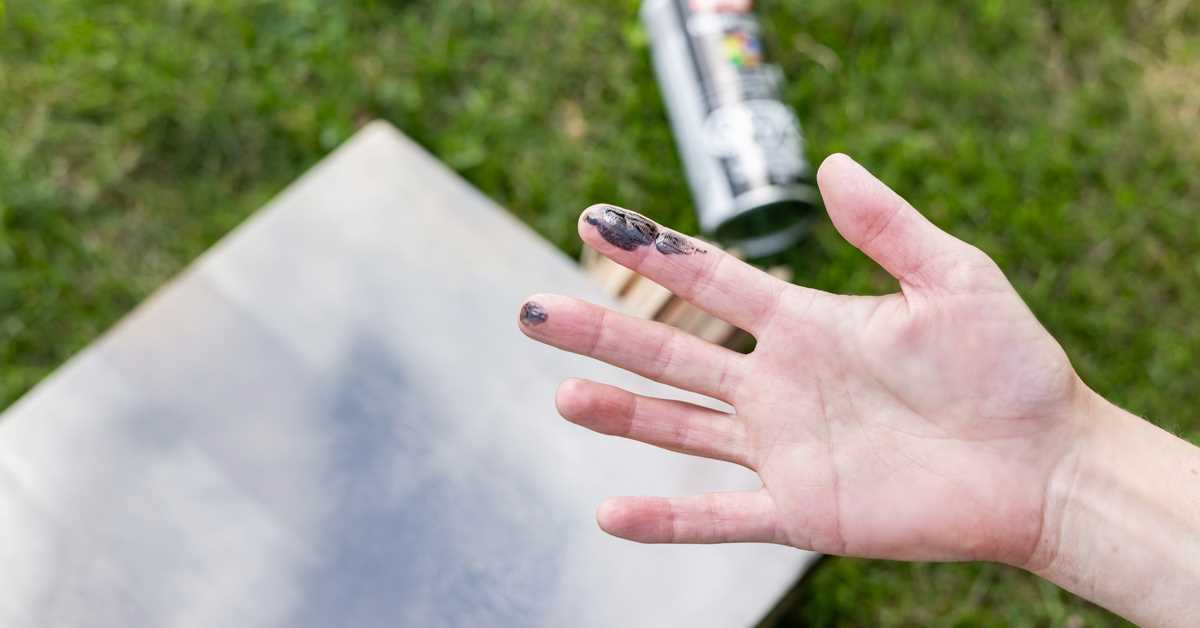
Spray paint can be difficult to get off skin, and it can cause skin damage if not removed properly. Here are some tips to prevent skin damage when dealing with spray paint:
- Wear protective clothing: When working with spray paint, it is important to wear gloves, long sleeves, and long pants to minimize skin exposure.
- Use a barrier cream: Before starting your project, apply a barrier cream to your skin. This will create a protective layer that can make it easier to remove the spray paint later.
- Avoid direct contact: Try to avoid direct contact with the spray paint as much as possible. Use brushes or other tools to apply the paint instead of using your hands.
- Work in a well-ventilated area: Spray paint can release fumes that can irritate the skin. Make sure to work in a well-ventilated area to minimize exposure to these fumes.
- Wash your hands regularly: If you do get spray paint on your skin, wash your hands immediately with soap and water. This can help remove the paint before it has a chance to dry and cause damage.
- Seek medical attention if necessary: If you experience any skin irritation or allergic reactions after coming into contact with spray paint, seek medical attention. A healthcare professional can provide appropriate treatment and advice.
By following these tips, you can minimize the risk of skin damage when working with spray paint. Remember to always prioritize your safety and take necessary precautions to protect your skin.
Ways to Protect Your Skin
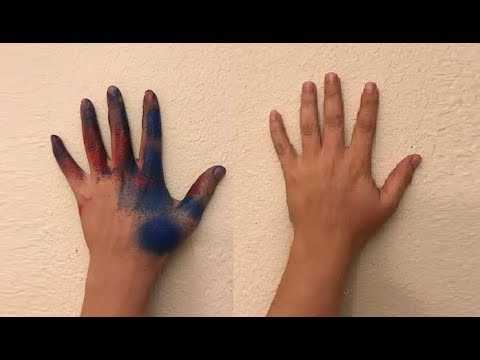
When working with spray paint, it’s important to take steps to protect your skin from getting paint on it. Here are some tips to keep your skin paint-free:
- Wear protective clothing: Cover your skin as much as possible by wearing long sleeves, long pants, and closed-toe shoes. This will help prevent the paint from getting on your skin.
- Use gloves: Wear gloves to protect your hands from direct contact with the spray paint. Choose gloves made from materials that are resistant to paint, such as latex or nitrile.
- Apply a barrier cream: Before starting your painting project, apply a barrier cream or lotion to your skin. This will create a protective layer that makes it easier to remove any paint that does get on your skin.
- Use a spray paint booth: If possible, work in a well-ventilated spray paint booth. This will help contain the paint particles and reduce the risk of them landing on your skin.
- Keep a wet cloth nearby: Have a wet cloth or sponge within reach while painting. If you accidentally get paint on your skin, immediately wipe it off with the wet cloth. The paint is easier to remove when it’s still wet.
- Wash your skin promptly: After finishing your painting project, wash your skin with soap and water to remove any paint residue. Use a gentle scrubbing motion to help lift off any stubborn paint stains.
- Apply moisturizer: Once your skin is clean, apply a moisturizer to keep it hydrated. This will help prevent your skin from drying out due to exposure to the paint.
By following these tips, you can minimize the chances of getting spray paint on your skin and make it easier to remove any paint that does get on you.
Importance of Prompt Removal
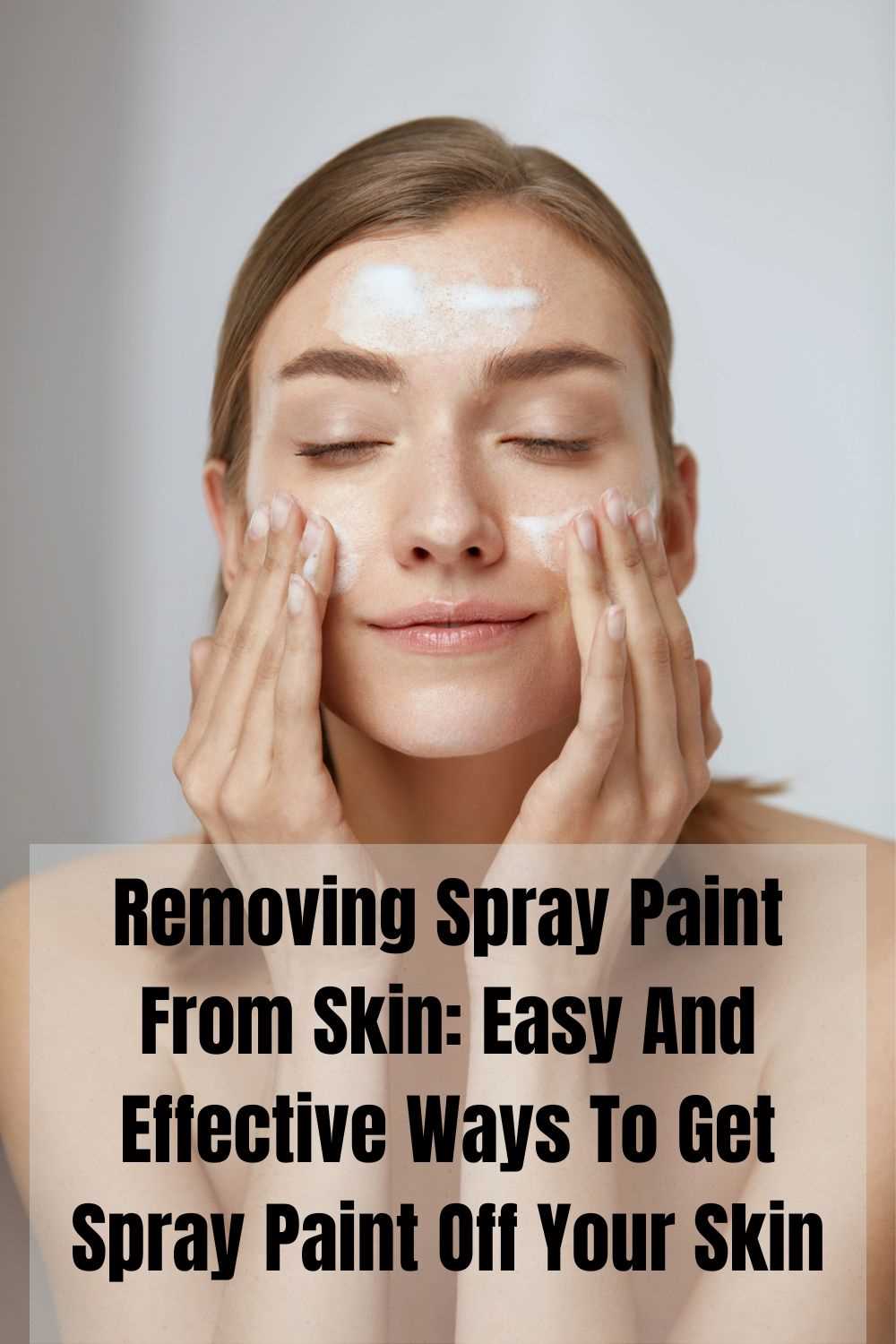
When it comes to spray paint on the skin, time is of the essence. The longer the paint stays on the skin, the harder it becomes to remove. That’s why it’s important to act quickly and get the paint off as soon as possible.
Not only can spray paint be unsightly on the skin, but it can also cause irritation and discomfort. The chemicals in spray paint can be harsh and may lead to skin reactions if left on for too long.
Knowing how to remove spray paint from the skin is essential for maintaining healthy and comfortable skin. By promptly removing the paint, you can prevent potential skin issues and ensure that your skin remains in good condition.
Additionally, removing spray paint promptly can help prevent the paint from seeping deeper into the skin. If the paint is left on for an extended period, it can penetrate the skin’s layers, making it even more challenging to remove.
By taking immediate action and using the right techniques, you can effectively get rid of spray paint from your skin without causing further damage or discomfort.
- Prompt removal of spray paint helps prevent skin irritation and discomfort.
- Removing the paint quickly can prevent potential skin issues.
- Timely removal prevents the paint from seeping deeper into the skin.
- Immediate action and proper techniques are essential for effective removal.
Remember, the key to successfully removing spray paint from the skin is to act fast. Don’t let the paint dry or settle into the skin. Use the right methods and products to get the paint off quickly and keep your skin looking and feeling its best.
Methods to Remove Spray Paint from Skin
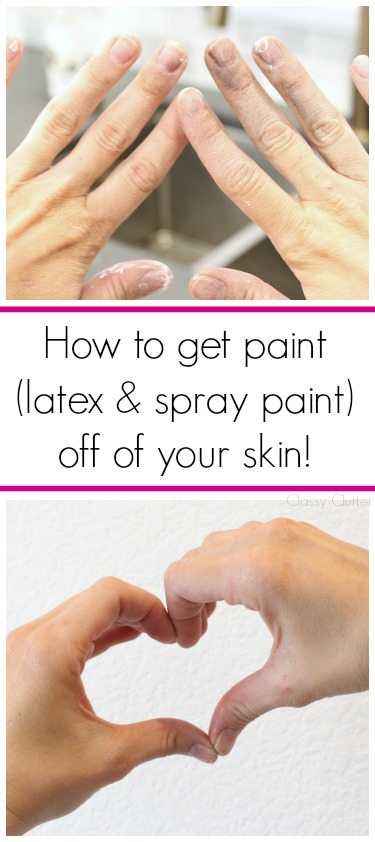
Accidentally getting spray paint on your skin can be frustrating, but there are several methods you can use to remove it effectively. Here are some easy tips and tricks to get spray paint off your skin:
- Soap and Water: The simplest method is to wash the affected area with soap and water. Use a mild soap and gently scrub the paint off your skin.
- Nail Polish Remover: If soap and water don’t work, try using nail polish remover. Apply a small amount to a cotton ball or cloth and rub it on the paint until it starts to dissolve. Rinse thoroughly with water afterwards.
- Olive Oil: Another effective method is to use olive oil. Apply a generous amount to the painted area and let it sit for a few minutes. Gently scrub the paint off with a cloth or sponge, and then rinse with soap and water.
- Acetone: Acetone, commonly found in nail polish remover, can also be used to remove spray paint from skin. Apply a small amount to a cotton ball or cloth and gently rub it on the paint until it comes off. Be sure to rinse the area thoroughly afterwards.
- Vegetable Oil: If you don’t have olive oil or acetone, you can try using vegetable oil. Apply a generous amount to the affected area and let it sit for a few minutes. Then, gently scrub the paint off with a cloth or sponge and rinse with soap and water.
Remember to always test any product or method on a small area of skin before applying it to a larger area. If irritation occurs, discontinue use and consult a doctor. With these methods, you can easily remove spray paint from your skin and get back to your day.
Using Soap and Water
To get spray paint off your skin, one of the easiest and most effective methods is by using soap and water. Here’s how to do it:
- Gather your materials: Before you begin, make sure you have a mild soap, such as dish soap or hand soap, and access to running water.
- Wet your hands: Start by wetting your hands with warm water.
- Apply soap: Take a small amount of soap and lather it onto your hands.
- Scrub gently: Rub your hands together, focusing on the areas where the spray paint is present. Use gentle motions to avoid irritating your skin.
- Rinse with water: Rinse your hands thoroughly under running water, ensuring that all the soap and spray paint have been washed away.
- Repeat if necessary: If there are still traces of spray paint on your skin, repeat steps 3 to 5 until it is completely removed.
Using soap and water is a safe and effective method for removing spray paint from your skin. Remember to be gentle and avoid scrubbing too hard, as this can cause skin irritation. If the spray paint does not come off with soap and water, you can try using other methods such as using oil or rubbing alcohol.
Step-by-Step Instructions
- Gather the necessary materials: You will need a few common household items to remove spray paint from your skin. These include soap, water, a soft cloth or sponge, rubbing alcohol, and olive oil.
- Act quickly: As soon as you notice the spray paint on your skin, try to remove it as soon as possible. The longer it stays on your skin, the harder it will be to remove.
- Wash with soap and water: Start by washing the affected area with soap and water. Use a gentle scrubbing motion to help loosen the paint from your skin. Rinse thoroughly.
- Use rubbing alcohol: If the paint doesn’t come off completely with soap and water, dampen a cloth or sponge with rubbing alcohol. Gently rub the paint-stained area in a circular motion. This should help break down the paint and make it easier to remove.
- Try olive oil: If rubbing alcohol doesn’t work, you can try using olive oil. Apply a small amount of olive oil to the paint-stained area and let it sit for a few minutes. Then, gently rub the area with a soft cloth or sponge. The oil should help dissolve the paint and make it easier to wipe away.
- Rinse and moisturize: After successfully removing the spray paint, rinse the area with water to remove any residue. Pat the skin dry with a clean towel and apply a moisturizer to keep your skin hydrated.
- Repeat if necessary: If there are still traces of paint on your skin, you can repeat the above steps until it is completely removed. Be patient and gentle with your skin to avoid any irritation.
Remember, prevention is key! To avoid getting spray paint on your skin in the first place, consider wearing protective clothing, gloves, and eyewear, and take precautions when using spray paint.
Tips for Stubborn Stains
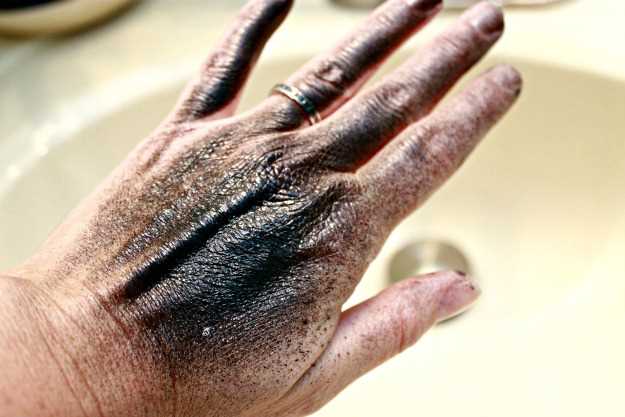
If the spray paint on your skin is particularly stubborn and difficult to remove, there are a few additional tips you can try:
- Use an oil-based cleanser: Oil-based cleansers, such as baby oil or olive oil, can help break down the spray paint and make it easier to remove. Apply the oil to the stained area and gently massage it in, then wipe away with a cloth or paper towel.
- Try rubbing alcohol: Rubbing alcohol can also be effective at removing stubborn spray paint stains. Soak a cotton ball or pad in rubbing alcohol and gently rub it over the stained area. This should help dissolve the paint and make it easier to wipe away.
- Use a pumice stone: If the spray paint has dried and is difficult to remove, you can try using a pumice stone. Wet the stone and gently rub it over the stained area in circular motions. Be careful not to apply too much pressure, as this can irritate the skin.
- Apply nail polish remover: Nail polish remover can also be effective at removing spray paint stains. Soak a cotton ball or pad in nail polish remover and gently rub it over the stained area. Make sure to rinse off the nail polish remover afterwards to avoid skin irritation.
Remember to always test these methods on a small patch of skin before applying them to a larger area to ensure that they do not cause any adverse reactions. If the spray paint stain persists or if you experience any skin irritation, it is best to seek professional advice.
Using Household Items

If you have spray paint on your skin and want to get rid of it, you don’t need to look further than your own home. There are several household items that can help remove spray paint effectively.
- Vinegar: Vinegar is a versatile household item that can be used to remove spray paint from skin. Simply soak a cotton ball or cloth in vinegar and gently rub it on the affected area. The acid in vinegar helps break down the paint, making it easier to remove.
- Baking soda: Baking soda is another common household item that can help remove spray paint from skin. Mix a small amount of baking soda with water to create a paste. Apply the paste to the painted area and gently scrub it with a cloth or sponge. The abrasive nature of baking soda helps lift the paint off the skin.
- Soap and water: Sometimes, a simple solution of soap and water is all you need to remove spray paint from skin. Wash the affected area with mild soap and warm water, using a gentle rubbing motion. This method may take a bit more time and effort, but it is effective for removing light layers of paint.
- Olive oil: Olive oil is not only great for cooking, but it can also help remove spray paint from skin. Apply a small amount of olive oil to the painted area and let it sit for a few minutes. Then, gently rub the area with a cloth or sponge to remove the paint. The oil helps loosen the paint, making it easier to wipe away.
Remember to always test these household items on a small, inconspicuous area of your skin before applying them to a larger area. If you experience any irritation or discomfort, discontinue use immediately.
Using these household items can help you easily remove spray paint from your skin. Whether you have vinegar, baking soda, soap and water, or olive oil on hand, you can effectively get rid of unwanted paint and restore the natural appearance of your skin.
Effective Ingredients to Try

When it comes to removing spray paint from skin, there are several effective ingredients that you can try. These ingredients can help break down the paint and make it easier to remove. Here are some options to consider:
- Soap and water: This is a simple and readily available option. Use a mild soap and warm water to create a lather, then gently scrub the painted area with your hands or a soft cloth.
- Oil: Oil can help dissolve spray paint and make it easier to remove. You can use a variety of oils such as cooking oil, baby oil, or even coconut oil. Apply a small amount of oil to the painted area and let it sit for a few minutes. Then, use a cloth or sponge to gently scrub the paint away.
- Vinegar: Vinegar is another effective ingredient for removing spray paint. Mix equal parts vinegar and water, then soak a cloth or sponge in the solution. Gently scrub the painted area until the paint starts to lift.
- Nail polish remover: Nail polish remover contains acetone, which can help break down spray paint. Apply a small amount of nail polish remover to a cotton ball or cloth, then gently rub the painted area until the paint starts to dissolve.
- Hand sanitizer: Hand sanitizer often contains alcohol, which can help remove spray paint. Apply a small amount of hand sanitizer to the painted area and rub gently until the paint starts to come off.
It’s important to note that some of these ingredients may cause skin irritation or dryness. Make sure to rinse the area thoroughly after using any of these methods, and apply a moisturizer to keep your skin hydrated.
Remember, prevention is always better than trying to remove spray paint from your skin. If you know you’ll be working with spray paint, consider wearing gloves or protective clothing to avoid getting paint on your skin in the first place.
Procedure for Using Household Items

If you have spray paint on your skin and you’re wondering how to get it off, don’t worry! You can easily remove it using common household items. Here is a step-by-step procedure to help you remove spray paint from your skin:
- Gather the necessary items: Before you begin, make sure you have the following items on hand:
- Soap or dishwashing liquid
- Warm water
- Scrub brush or sponge
- White vinegar
- Cotton balls or a soft cloth
- Hand lotion or moisturizer
- Wash the affected area: Start by washing the spray paint off your skin with soap or dishwashing liquid and warm water. Use a scrub brush or sponge to gently scrub the area and remove any loose paint particles.
- Apply white vinegar: Soak a cotton ball or a soft cloth in white vinegar and gently dab it onto the spray paint. The acidity of the vinegar will help break down the paint and make it easier to remove.
- Gently scrub: Use the scrub brush or sponge to gently scrub the affected area again, this time focusing on the spots where the vinegar was applied. Be careful not to scrub too hard, as this could irritate your skin.
- Rinse with warm water: Rinse the area with warm water to remove any remaining paint and vinegar residue.
- Moisturize: After removing the spray paint, it’s important to moisturize your skin to prevent dryness. Apply a hand lotion or moisturizer to the affected area and massage it in gently.
By following this procedure and using household items like soap, white vinegar, and warm water, you can easily get spray paint off your skin. Remember to be gentle and take care of your skin throughout the process.
Video:How to Remove Spray Paint from Skin Easy Tips and Tricks
Hello, I am Beverly J. Sanders, the voice behind the diverse articles you come across on styves.co.za. My passion lies in exploring the nuances of home improvement and sharing tips that can help you transform your living space into a haven of comfort and style. From the latest trends in home decor to practical cleaning advice, I cover a broad spectrum of topics to cater to a wide variety of interests.
In my recent works, I have delved into the advantages of incorporating a horizontal Murphy bed into your home to save space without compromising on design and functionality. I also explored the benefits of having a free-standing electric fireplace that not only adds warmth to your home but also brings a sleek and modern design to any living space. My articles are a rich resource, offering insights into different products and home improvement strategies that can enhance the quality of your life.
I believe in the power of details; a belief that reflects in my comprehensive guides where I discuss even the overlooked aspects of home decor, such as the impact of baseboard trim in enhancing the overall look and feel of your home. I am constantly on the lookout for innovative solutions and products that can add value to your home and life.
Join me in my exploration as I continue to bring you the latest trends, tips, and insights in the home improvement world. Let’s create a home that is not just a place to live, but a reflection of style and personality.